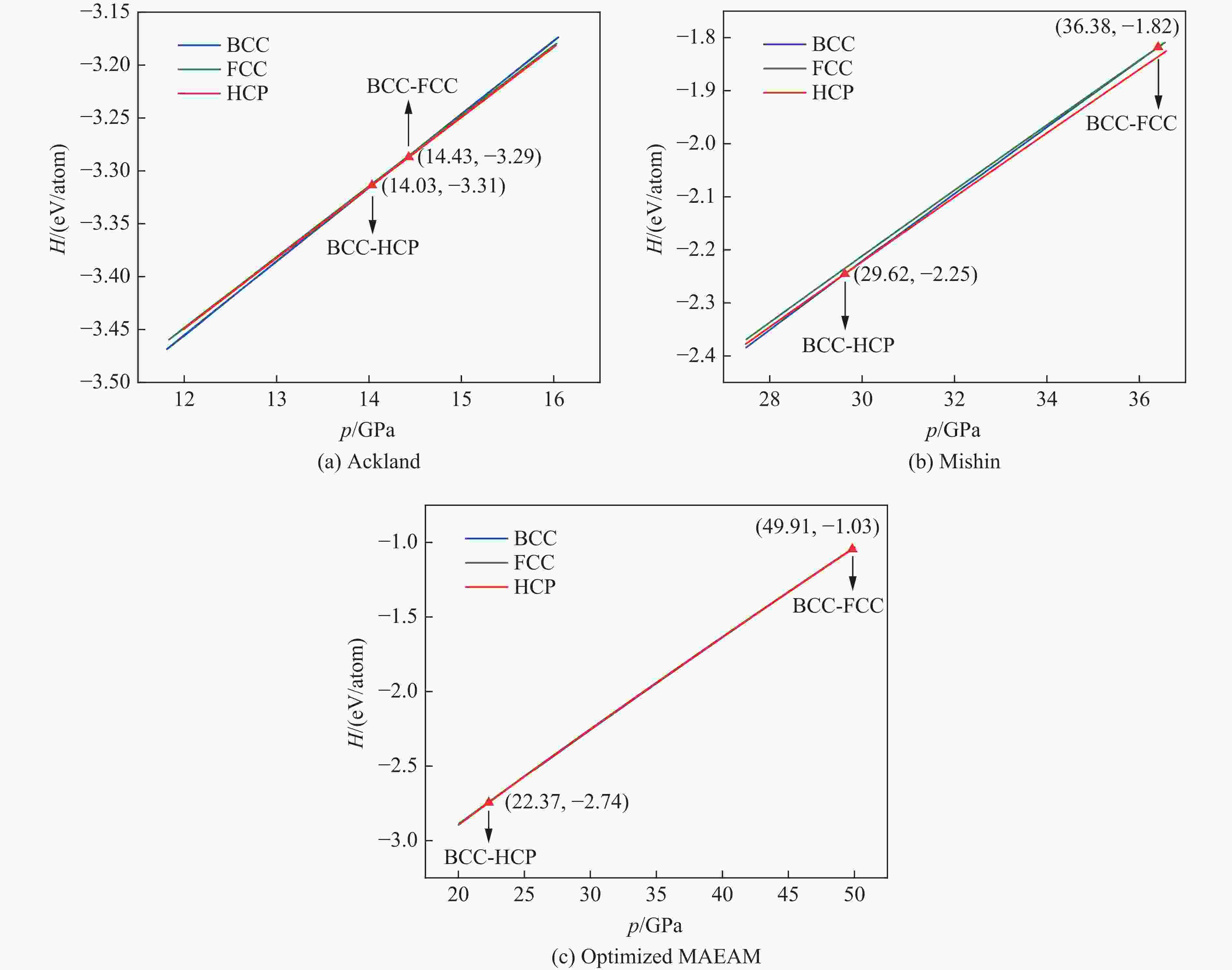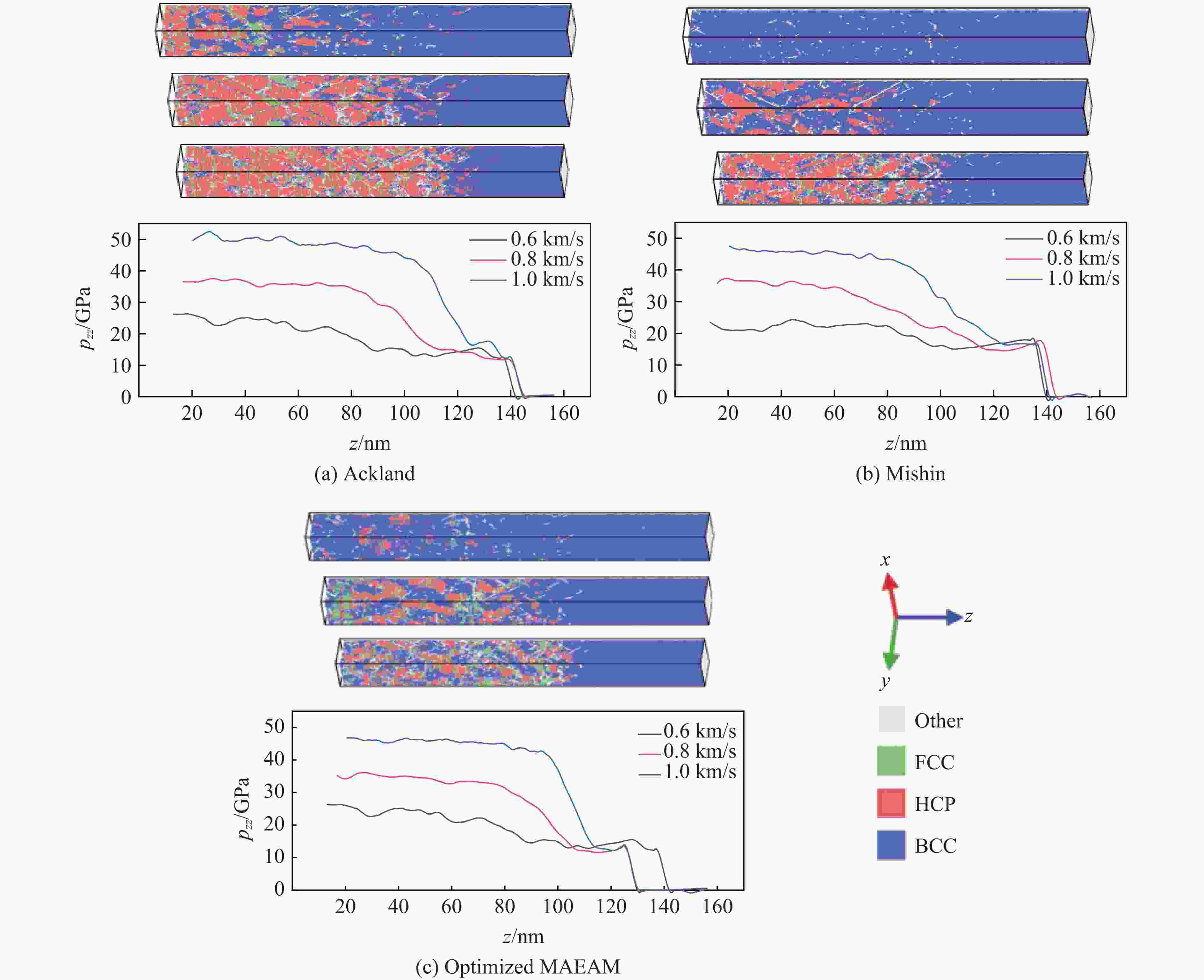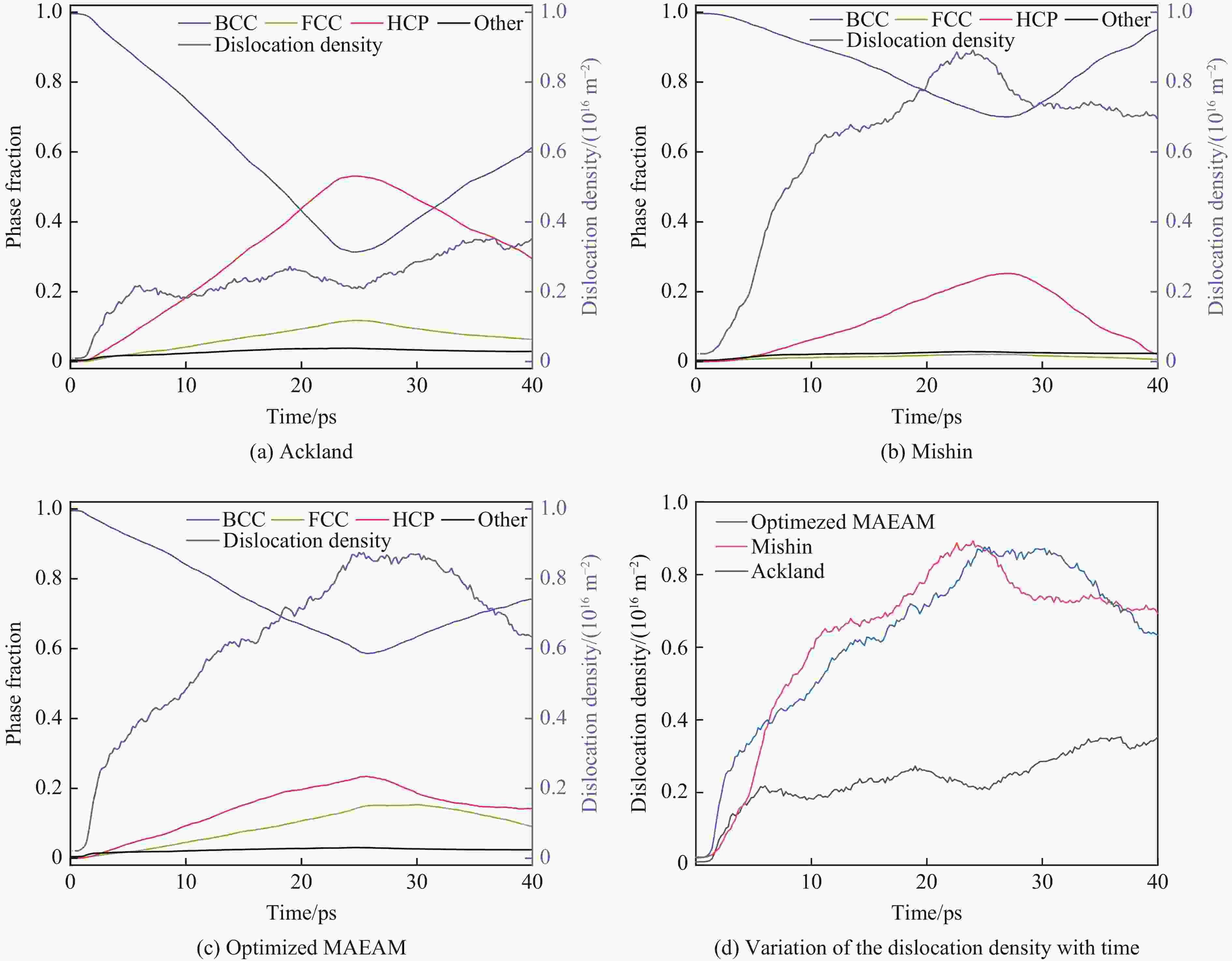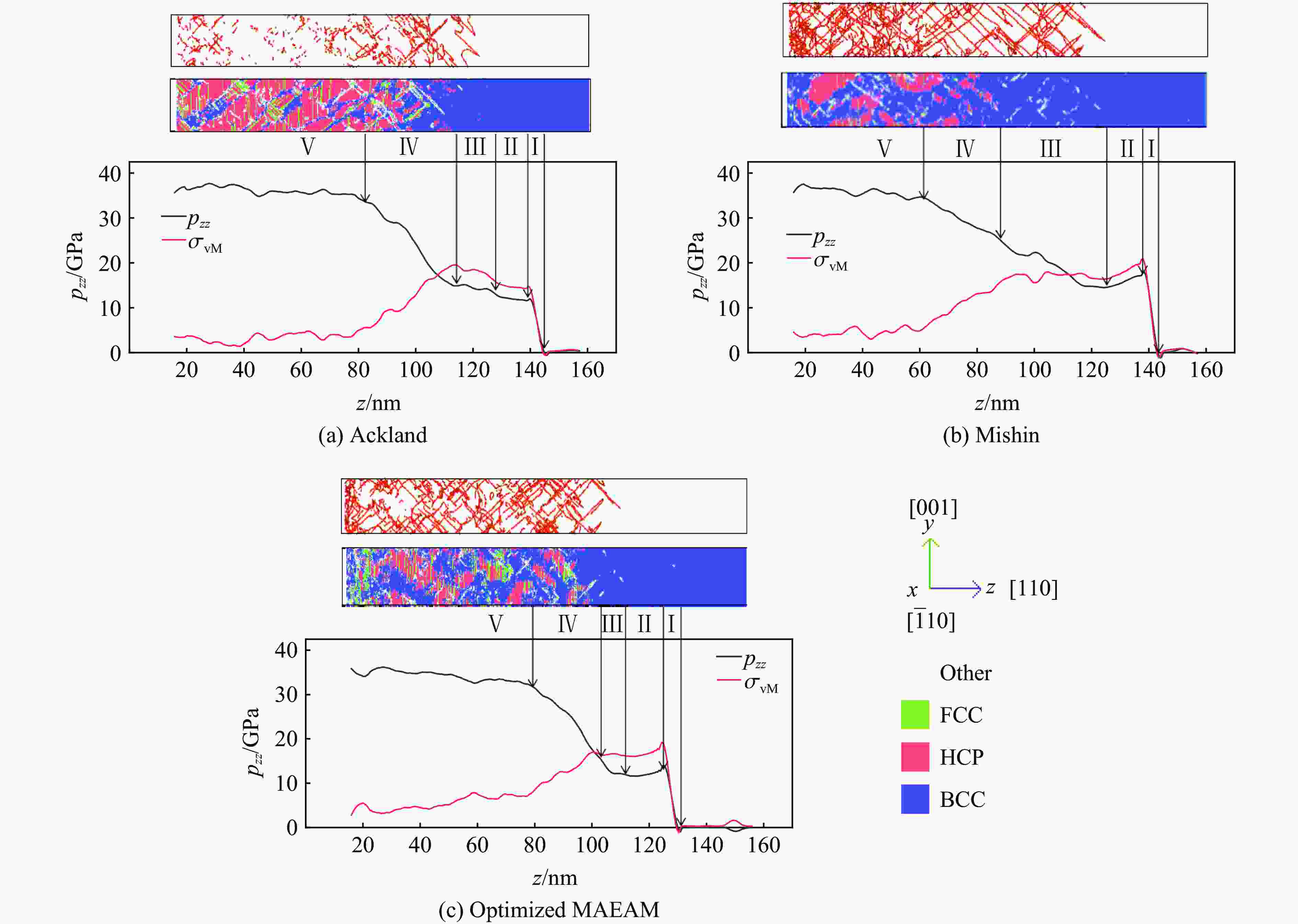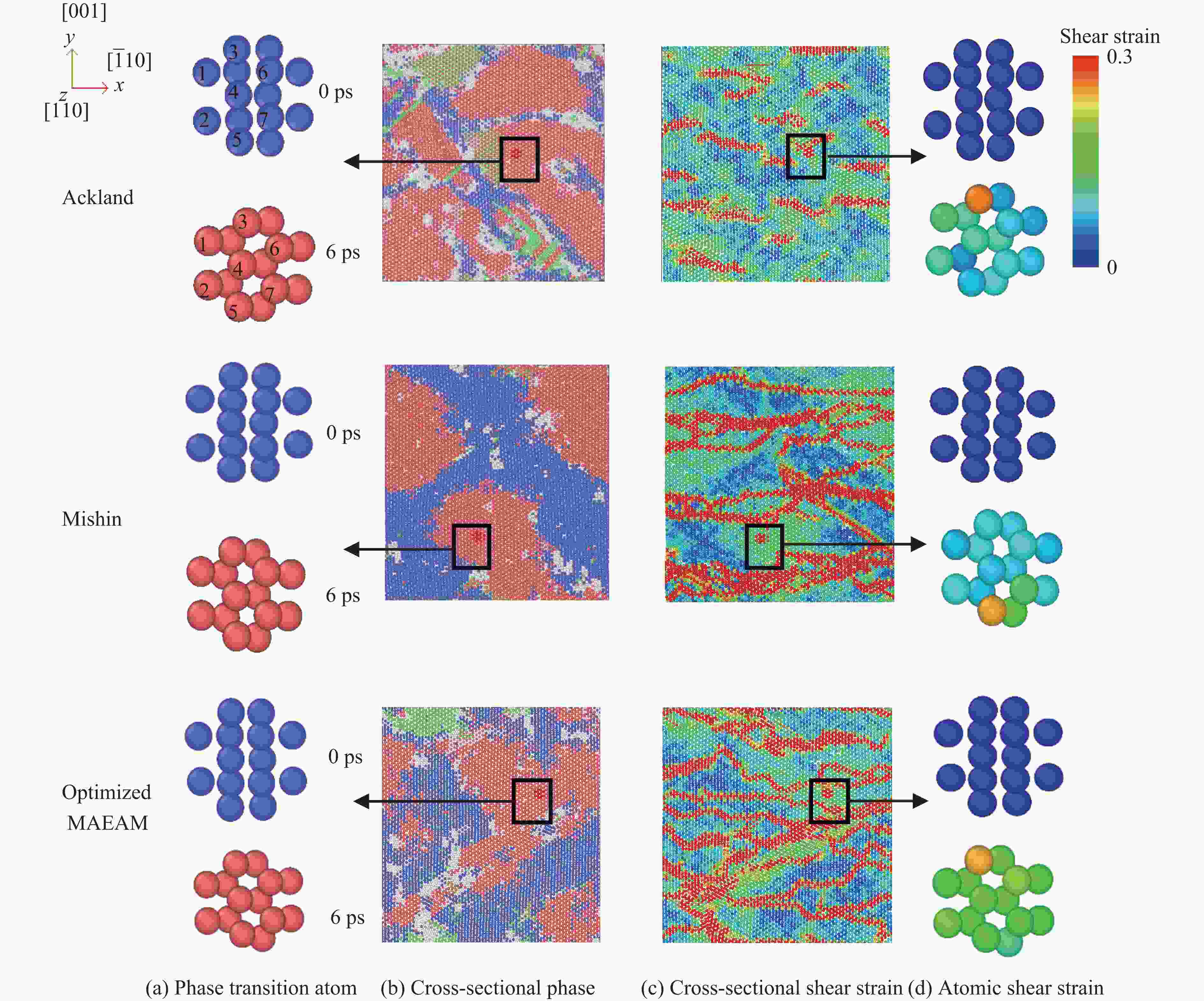| [1] |
MAO H K, BASSETT W A, TAKAHASHI T. Effect of pressure on crystal structure and lattice parameters of iron up to 300 kbar [J]. Journal of Applied Physics, 1967, 38(1): 272–276. doi: 10.1063/1.1708965
|
| [2] |
LIN J F, HEINZ D L, CAMPBELL A J, et al. Iron-silicon alloy in Earthʼs core? [J]. Science, 2002, 295(5553): 313–315. doi: 10.1126/science.1066932
|
| [3] |
GU C, CHEN H Y, ZHAO Y S, et al. Formation of hierarchically structured martensites in pure iron with ultrahigh strength and stiffness [J]. Proceedings of the National Academy of Sciences of the United States of America, 2024, 121(42): e2408119121. doi: 10.1073/pnas.2408119121
|
| [4] |
TAKAHASHI T, BASSETT W A. High-pressure polymorph of iron [J]. Science, 1964, 145(3631): 483–486. doi: 10.1126/science.145.3631.483
|
| [5] |
NGUYEN J H, HOLMES N C. Melting of iron at the physical conditions of the Earthʼs core [J]. Nature, 2004, 427(6972): 339–342. doi: 10.1038/nature02248
|
| [6] |
SUN Y, MENDELEV M I, ZHANG F, et al. Ab initio melting temperatures of bcc and hcp iron under the Earth’s inner core condition [J]. Geophysical Research Letters, 2023, 50(5): e2022GL102447. doi: 10.1029/2022GL102447
|
| [7] |
BANCROFT D, PETERSON E L, MINSHALL S. Polymorphism of iron at high pressure [J]. Journal of Applied Physics, 1956, 27(3): 291–298. doi: 10.1063/1.1722359
|
| [8] |
唐志平. 冲击相变研究的现状与趋势 [J]. 高压物理学报, 1994, 8(1): 14–22. doi: 10.11858/gywlxb.1994.01.003TANG Z P. Some topics in shock-induced phase transitions [J]. Chinese Journal of High Pressure Physics, 1994, 8(1): 14–22. doi: 10.11858/gywlxb.1994.01.003
|
| [9] |
王昆, 肖时芳, 祝文军, 等. 动态载荷下铁相变的原子模拟研究进展 [J]. 高压物理学报, 2021, 35(4): 040110. doi: 10.11858/gywlxb.20210729WANG K, XIAO S F, ZHU W J, et al. Progress on atomic simulations of phase transition of iron under dynamic loading [J]. Chinese Journal of High Pressure Physics, 2021, 35(4): 040110. doi: 10.11858/gywlxb.20210729
|
| [10] |
ZHU Y Q, GONG Q H, YI M. Molecular dynamics investigation of shock-induced deformation behavior and failure mechanism in metallic materials [J]. Archives of Computational Methods in Engineering, 2024, 31(4): 2317–2344. doi: 10.1007/s11831-023-10045-8
|
| [11] |
LIU X, MASHIMO T, KAWAI N, et al. Isotropic phase transition of single-crystal iron (Fe) under shock compression [J]. Journal of Applied Physics, 2018, 124(21): 215101. doi: 10.1063/1.5040683
|
| [12] |
KADAU K, GERMANN T C, LOMDAHL P S, et al. Atomistic simulations of shock-induced transformations and their orientation dependence in bcc Fe single crystals [J]. Physical Review B, 2005, 72(6): 064120. doi: 10.1103/PhysRevB.72.064120
|
| [13] |
WANG K, XIAO S F, DENG H Q, et al. An atomic study on the shock-induced plasticity and phase transition for iron-based single crystals [J]. International Journal of Plasticity, 2014, 59: 180–198. doi: 10.1016/j.ijplas.2014.03.007
|
| [14] |
LU Z P, ZHU W J, LU T C, et al. Does the fcc phase exist in the Fe bcc-hcp transition? a conclusion from first-principles studies [J]. Modelling and Simulation in Materials Science and Engineering, 2014, 22(2): 025007. doi: 10.1088/0965-0393/22/2/025007
|
| [15] |
SMITH R F, EGGERT J H, SWIFT D C, et al. Time-dependence of the alpha to epsilon phase transformation in iron [J]. Journal of Applied Physics, 2013, 114(22): 223507. doi: 10.1063/1.4839655
|
| [16] |
JENSEN B J, GRAY III G T, HIXSON R S. Direct measurements of the α-ε transition stress and kinetics for shocked iron [J]. Journal of Applied Physics, 2009, 105(10): 103502. doi: 10.1063/1.3110188
|
| [17] |
KADAU K, GERMANN T C, LOMDAHL P S, et al. Microscopic view of structural phase transitions induced by shock waves [J]. Science, 2002, 296(5573): 1681–1684. doi: 10.1126/science.1070375
|
| [18] |
崔新林, 祝文军, 邓小良, 等. 冲击波压缩下含纳米孔洞单晶铁的结构相变研究 [J]. 物理学报, 2006, 55(10): 5545–5550. doi: 10.3321/j.issn:1000-3290.2006.10.095CUI X L, ZHU W J, DENG X L, et al. Molecular dynamic simulation of shock-induced phase transformation in single crystal iron with nano-void inclusion [J]. Acta Physica Sinica, 2006, 55(10): 5545–5550. doi: 10.3321/j.issn:1000-3290.2006.10.095
|
| [19] |
CUI X L, ZHU W J, HE H L, et al. Phase transformation of iron under shock compression: effects of voids and shear stress [J]. Physical Review B, 2008, 78(2): 024115. doi: 10.1103/PhysRevB.78.024115
|
| [20] |
AMADOU N, DE RESSÉGUIER T. Pressure waves induced by the bcc-hcp phase transition in dynamically loaded single crystal iron [J]. Computational Materials Science, 2025, 247: 113559. doi: 10.1016/j.commatsci.2024.113559
|
| [21] |
YAO S L, YU J D, PEI X Y, et al. A coupled phase-field and crystal plasticity model for understanding shock-induced phase transition of iron [J]. International Journal of Plasticity, 2024, 173: 103860. doi: 10.1016/j.ijplas.2023.103860
|
| [22] |
WANG F M, INGALLS R. Iron bcc-hcp transition: local structure from X-ray-absorption fine structure [J]. Physical Review B, 1998, 57(10): 5647–5654. doi: 10.1103/PhysRevB.57.5647
|
| [23] |
HAWRELIAK J, COLVIN J D, EGGERT J H, et al. Analysis of the X-ray diffraction signal for the α-ε transition in shock-compressed iron: simulation and experiment [J]. Physical Review B, 2006, 74(18): 184107. doi: 10.1103/PhysRevB.74.184107
|
| [24] |
LEVITAS V I. Strain-induced nucleation at a dislocation pile-up: a nanoscale model for high pressure mechanochemistry [J]. Physics Letters A, 2004, 327(2/3): 180–185. doi: 10.1016/j.physleta.2004.05.029
|
| [25] |
LEVITAS V I. High-pressure mechanochemistry: conceptual multiscale theory and interpretation of experiments [J]. Physical Review B, 2004, 70(18): 184118. doi: 10.1103/PhysRevB.70.184118
|
| [26] |
WANG B T, SHAO J L, ZHANG G C, et al. Nucleation of hcp and fcc phases in bcc iron under uniform compression: classical molecular dynamics simulations [J]. Journal of Physics: Condensed Matter, 2010, 22(43): 435404. doi: 10.1088/0953-8984/22/43/435404
|
| [27] |
SHAO J L, WANG P, ZHANG F G, et al. Hcp/fcc nucleation in bcc iron under different anisotropic compressions at high strain rate: molecular dynamics study [J]. Scientific Reports, 2018, 8(1): 7650. doi: 10.1038/s41598-018-25758-1
|
| [28] |
MEYER R, ENTEL P. Martensite-austenite transition and phonon dispersion curves of Fe1−x Nix studied by molecular-dynamics simulations [J]. Physical Review B, 1998, 57(9): 5140–5147. doi: 10.1103/PhysRevB.57.5140
|
| [29] |
MENDELEV M I, HAN S, SROLOVITZ D J, et al. Development of new interatomic potentials appropriate for crystalline and liquid iron [J]. Philosophical Magazine, 2003, 83(35): 3977–3994. doi: 10.1080/14786430310001613264
|
| [30] |
GUNKELMANN N, BRINGA E M, KANG K, et al. Polycrystalline iron under compression: plasticity and phase transitions [J]. Physical Review B, 2012, 86(14): 144111. doi: 10.1103/PhysRevB.86.144111
|
| [31] |
HARRISON R J, VOTER A F, CHEN S P. Embedded atom potential for BCC iron [M]//VITEK V, SROLOVITZ D J. Atomistic Simulation of Materials: Beyond Pair Potentials. New York: Springer, 1989: 219–222.
|
| [32] |
KADAU K, GERMANN T C, LOMDAHL P S, et al. Shock waves in polycrystalline iron [J]. Physical Review Letters, 2007, 98(13): 135701. doi: 10.1103/PhysRevLett.98.135701
|
| [33] |
ACKLAND G J, MENDELEV M I, SROLOVITZ D J, et al. Development of an interatomic potential for phosphorus impurities in α-iron [J]. Journal of Physics: Condensed Matter, 2004, 16(27): S2629–S2642. doi: 10.1088/0953-8984/16/27/003
|
| [34] |
CHAMATI H, PAPANICOLAOU N I, MISHIN Y, et al. Embedded-atom potential for Fe and its application to self-diffusion on Fe (100) [J]. Surface Science, 2006, 600(9): 1793–1803. doi: 10.1016/j.susc.2006.02.010
|
| [35] |
HU W Y, SHU X L, ZHANG B W. Point-defect properties in body-centered cubic transition metals with analytic EAM interatomic potentials [J]. Computational Materials Science, 2002, 23(1/2/3/4): 175–189. doi: 10.1016/S0927-0256(01)00238-5
|
| [36] |
STUKOWSKI A. Visualization and analysis of atomistic simulation data with OVITO—the open visualization tool [J]. Modelling and Simulation in Materials Science and Engineering, 2010, 18(1): 015012. doi: 10.1088/0965-0393/18/1/015012
|







 下载:
下载:
